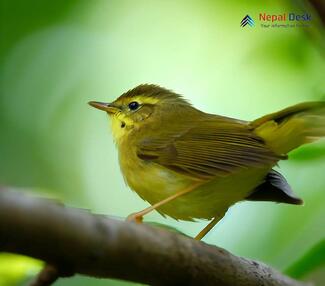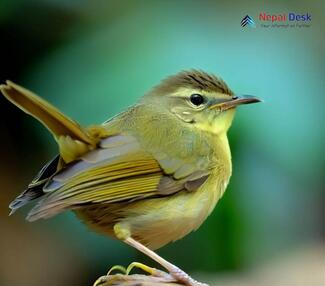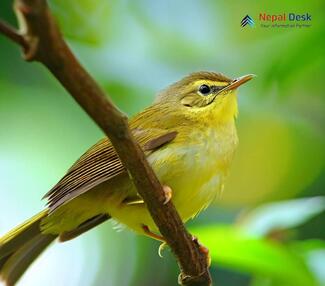With more than 900 bird species, Nepal offers an incredible opportunity to observe various species of birds. One such is Aberrant Bush Warbler (Horornis flavolivaceus). It is a species in the bush warbler family, Cettiidae, and was formally described in 1845 by the English zoologist Edward Blyth based on a specimen collected in Nepal. He placed the species in the genus Neornis and coined the binomial name Neornis flavolivacea. But it is now placed in the genus Horornis that was introduced in 1845 by Brian Hodgson.
Let us look at the various facts and details of the Aberrant Bush Warbler:
An Introduction to the Aberrant Bush Warbler
While the scientific name Horornis flavolivaceus might seem unusual, birders commonly recognize this small songbird as the Aberrant Bush Warbler. This elusive bird is found in subtropical or tropical moist montane forests and mountainous shrublands, primarily in Asia. In Nepal, its preferred habitat range lies between 915 and 2,200 meters above sea level.
Adapting to The Montane Environment
As with many high-altitude dwelling species, the Aberrant Bush Warbler boasts an assortment of captivating traits that make it well-suited for thriving in the harsh montane environment. One striking feature is its dull olive-green plumage that blends well with its surroundings, making it difficult for predators to spot. They are tiny creatures, measuring just about 10-12 cm long. The short tail and stout bill also aid in their survival by equipping them with excellent maneuvering capabilities amid dense shrubs and branches.
Vocal Display – A Major Attraction
Despite being notoriously challenging to spot due to their secretive nature and brilliant camouflage skills, bird enthusiasts can appreciate their presence through their remarkable vocal displays. The Aberrant Bush Warbler produces loud and distinct territorial songs during the breeding season, which makes it a delightful reward for those who patiently wait to catch a glimpse of these elusive birds.
Conservation Status and the Importance of Preservation
Currently listed as "Least Concern" by the International Union for Conservation of Nature (IUCN), the Aberrant Bush Warbler population seems stable. Nevertheless, habitat destruction and climate change threaten these birds and their counterparts, requiring dedicated conservation efforts from not only the Nepalese government but also wildlife enthusiasts worldwide.
Experience the Beauty of Nepal's Avian World
Whether you are an expert birder or an amateur ornithologist, witnessing the captivating beauty of the Aberrant Bush Warbler in Nepal is a unique opportunity. Visiting this biodiverse region will enable you to appreciate its pristine ecosystems and understand why preserving such habitats is crucial for generations to come. With unparalleled charm, abundant avian species, and unmatched natural beauty, Nepal stands tall as a birdwatching haven that begs to be explored.




